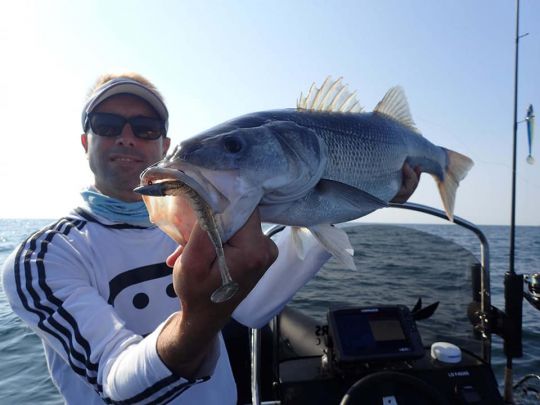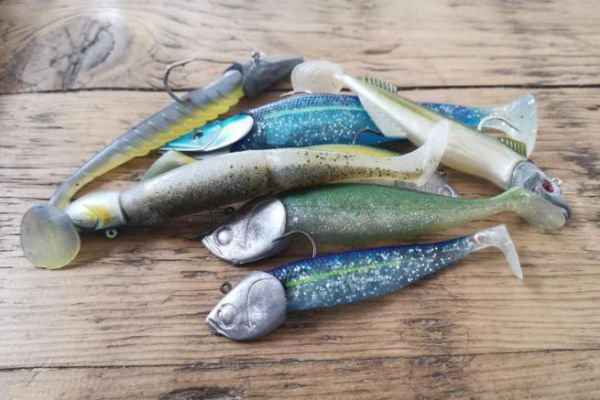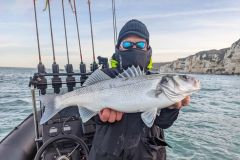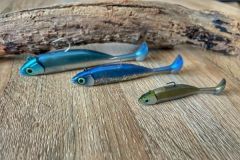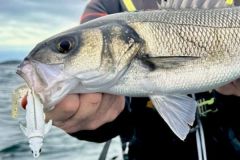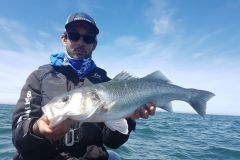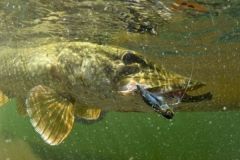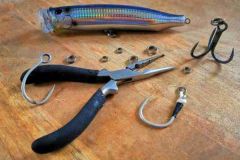Shads, which are flexible lures with a caudal fin, are very numerous on the market. Although they sometimes look very similar, it's difficult to understand how they are specific and what they are intended for. However, there are a number of differentiating criteria that allow us to guess at their behavior.
The general shape
We can distinguish 2 particular profiles of shads: those with a long body and those with a chunky body. The particularity of the latter is that this shape, by deflecting the flow of water through them, creates an oscillation from right to left around their longitudinal axis. This is called rolling. This feature can be accentuated by tilting the lead head downwards when setting up.
The latter, which are long, will have less pronounced rolling, offer less resistance to the water and the action will be more on the caudal side.
So, while we prefer to restrict them, we don't restrict them to one type of fishing: the larger ones for pull-through fishing and the smaller ones for linear, scratch or vertical fishing.
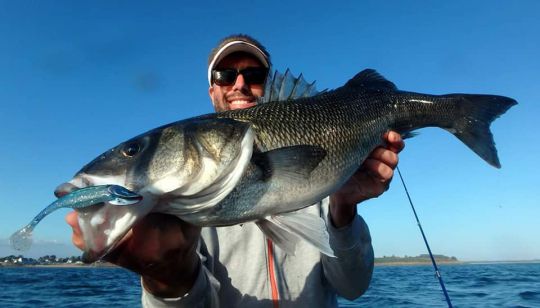
The rigidity of plastic
Beyond their shape, shads are made from materials of varying degrees of rigidity. This characteristic influences two factors:
- Swimming speed: the softer the plastic, the slower it can swim.
- Vibration intensity: the stiffer the plastic, the stronger and more audible the vibrations.
A shad made from a hard plastic will require wider, more sustained strokes to get the paddle into action and will therefore be better suited to fast fishing or pulling.

The connection between body and paddle
The diameter of the section between your shad's body and tail determines the amplitude and swimming speed of its beater. The shorter this section, the slower your shad's tail will be able to move and the faster and lower-amplitude its beats will be. As a result, the vibrations are less intense and more discreet, making them particularly effective for slow, fine fishing close to the bottom or medium-speed fishing between two waters. At high speeds, the caudal pulse may become saturated and other models will be more appropriate.
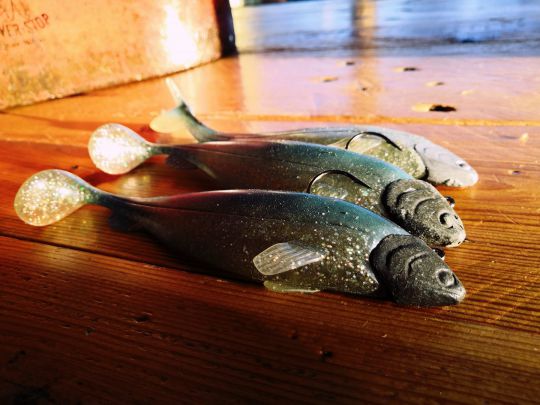
Caudal size and thickness
The shape, thickness and surface of the caudal fin are decisive in determining how your lure will behave underwater, especially when combined with the previous characteristics.
In fact, a thick, wide paddle will be heavier and therefore its beats will have a lower frequency at the same speed than a model with a small, thin paddle.
The vibrations created will be of greater intensity and the lure's descent will be particularly slowed.
Large, thick paddles will be more effective for tug-of-war fishing or slow linear fishing, while thin, narrow paddles will be more effective for fine, slow-scraper fishing.
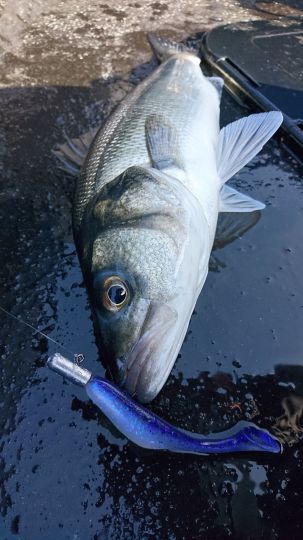
The current
While we've discussed the use of different shads according to their design, the particularities of the environment must be taken into account. Your lure's caudal action depends on the water pressure exerted on it. This pressure depends on the speed of your animation, but also on the speed of the current. In a strong current, rigid shads will be easier to activate and their powerful vibrations will be more audible to predators.
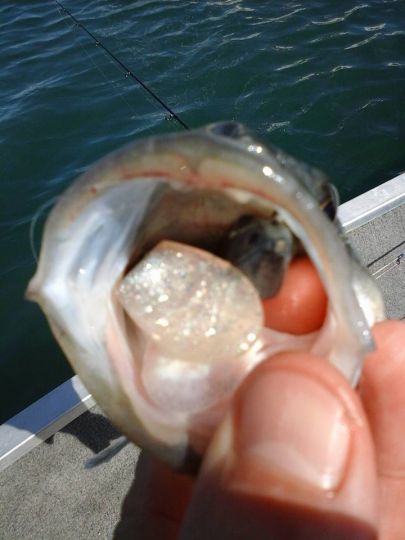
General rules
If these 4 criteria allow you to differentiate one shad from another and to guess at its use, they remain general rules that suffer from many exceptions depending on the mood of the fish, but also on the habits of each individual. There's nothing to prevent you from catching fish when using a shad for scraping and vice versa, but this requires adjustments in terms of animations and the specificities of the environment you're fishing in.
